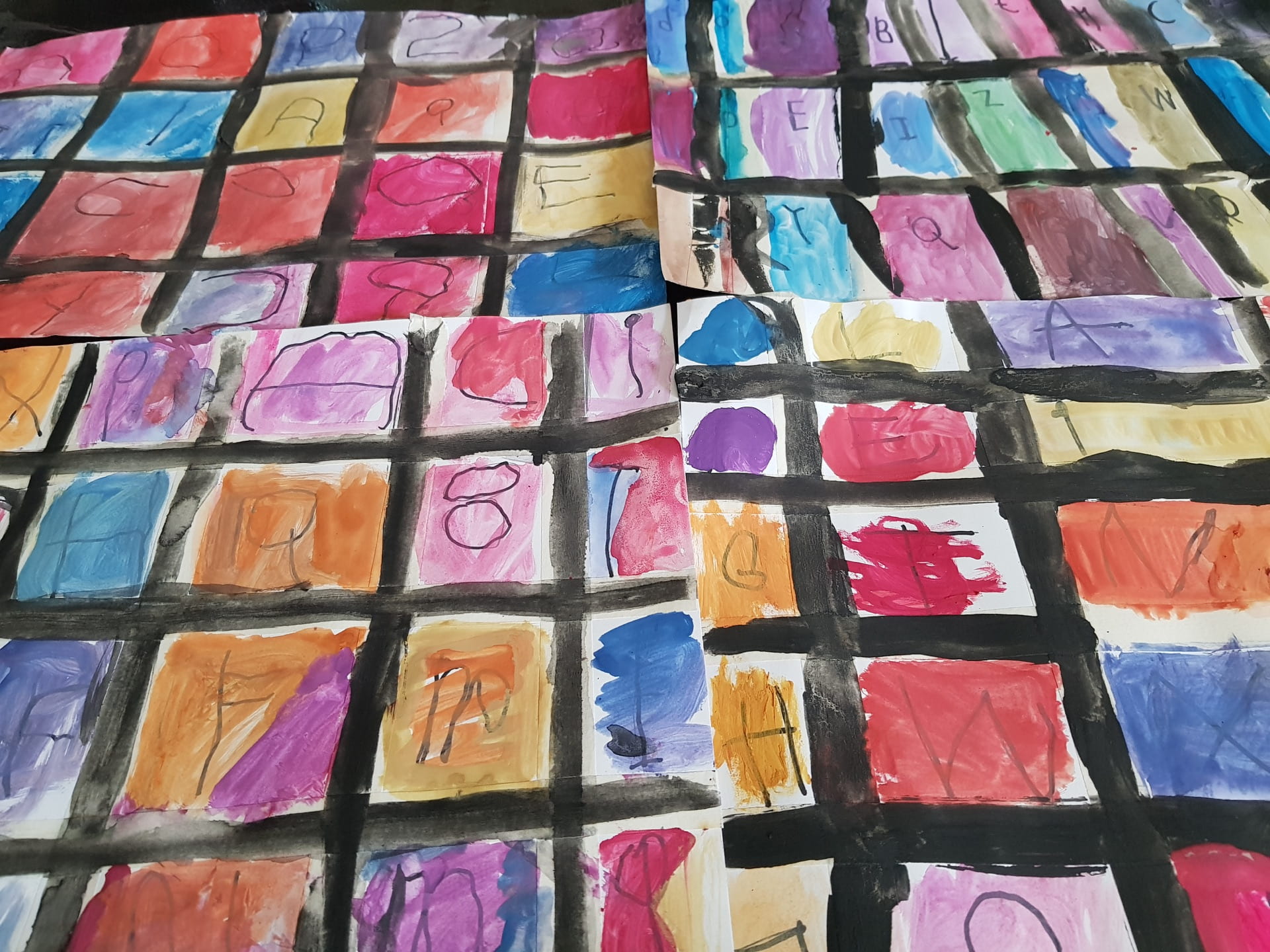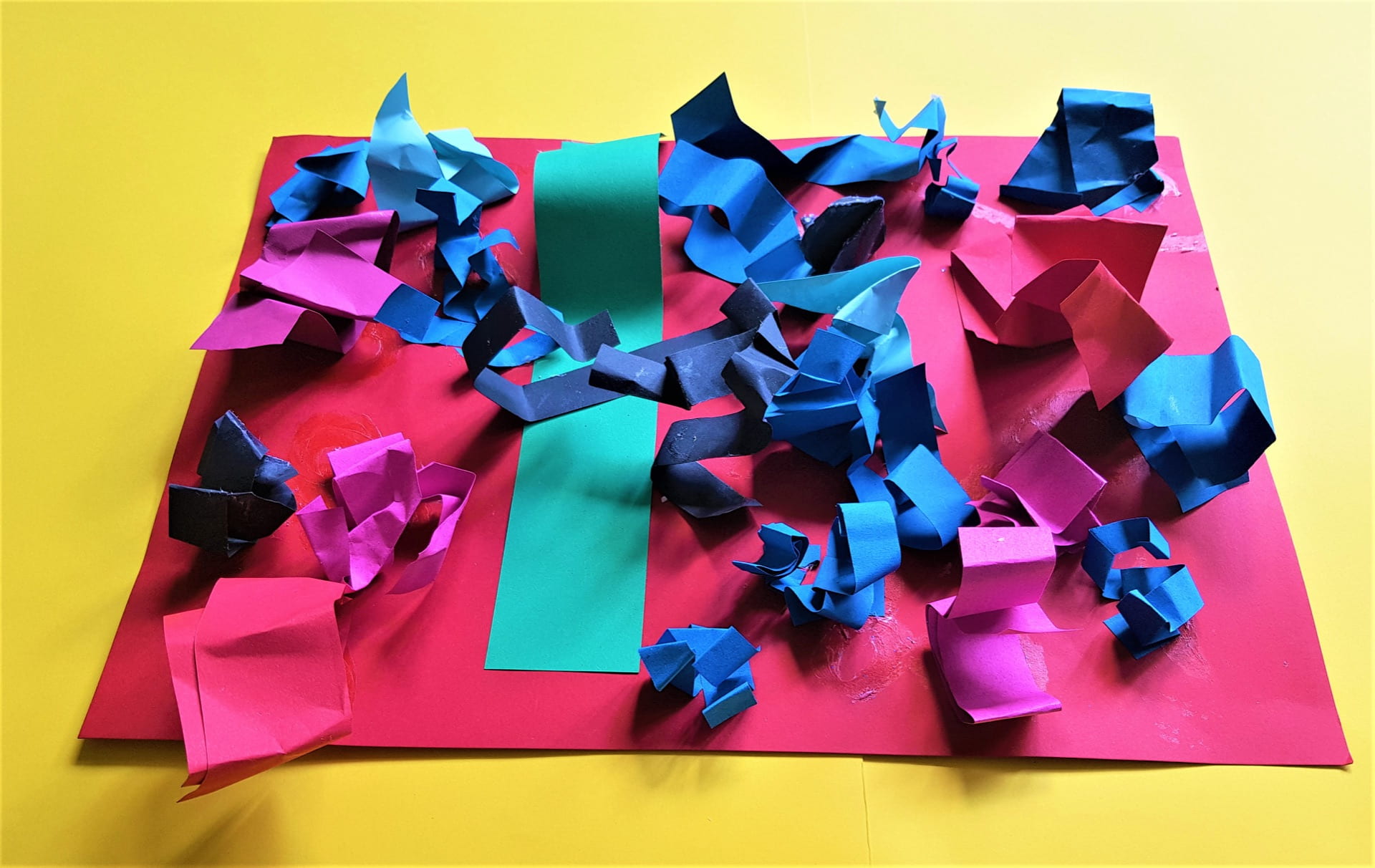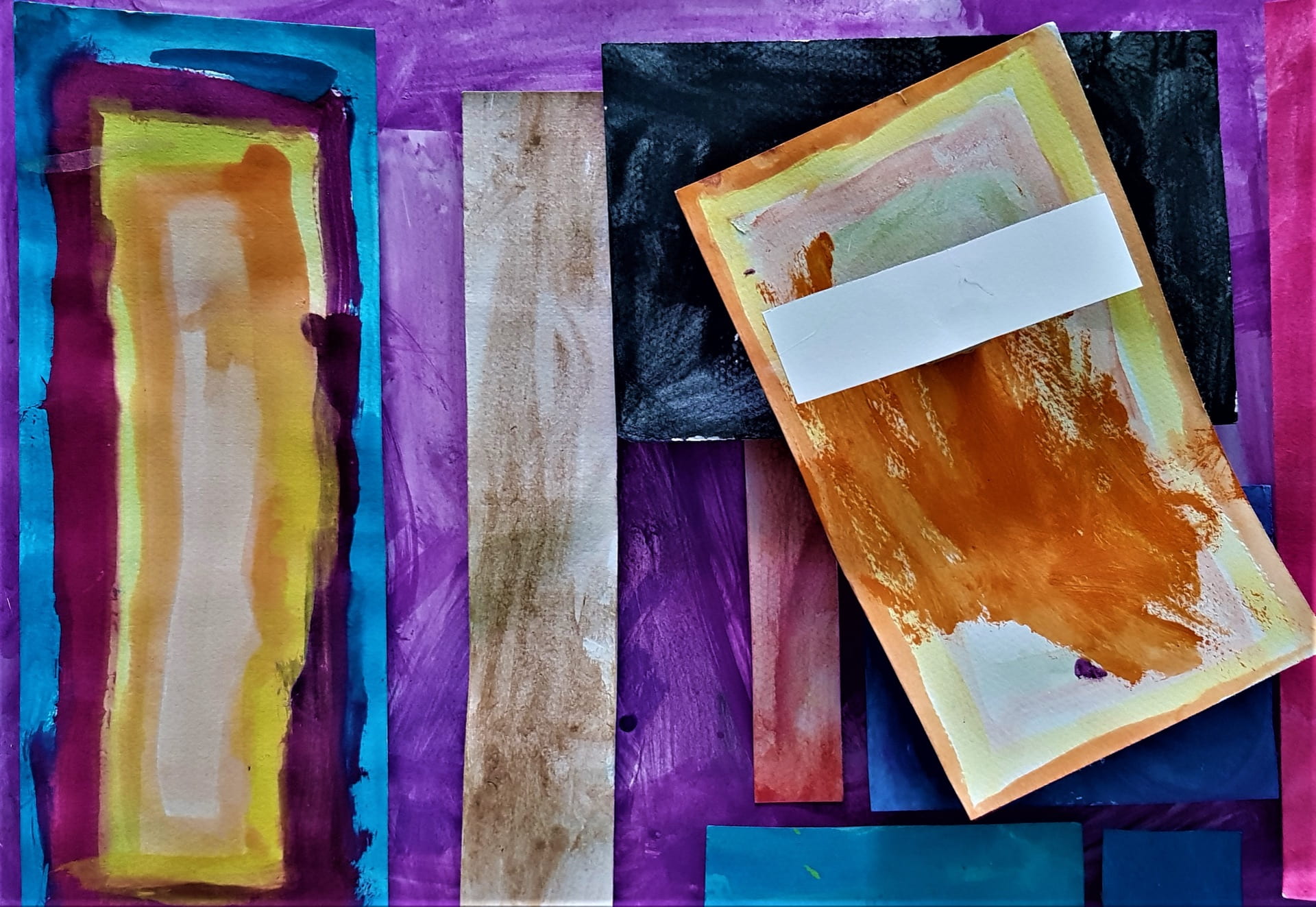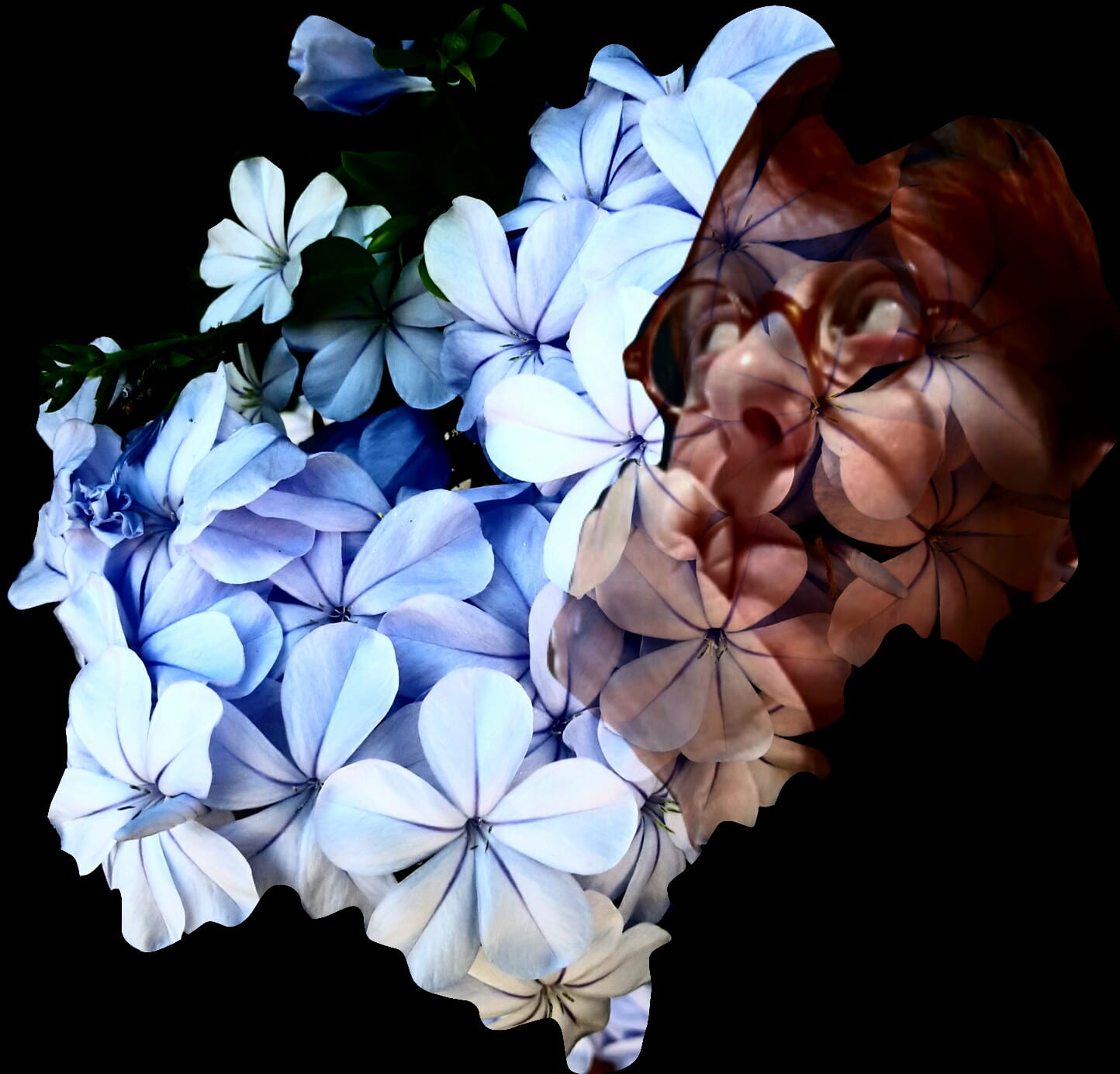 By Holly B.F. Warren (Atelierista and creator of the Think Tank)
By Holly B.F. Warren (Atelierista and creator of the Think Tank)
A work of art can be created with words, notes, movement, sound, light, food, photography, clay, stone, natural materials, and paint—to name a few. A work of art has aesthetic value as it combines different elements in its creation.
Where does a work of art start? How does it unfold? Does it unfold or does it appear, surface, materialize, unravel, pop up, spill, drip… from our minds?
Our senses absorb the environment we live in, sending signals to the brain that then translate/interpret them. We create a bank of notions that become what we call knowledge as we do this; we constantly make connections. Can a work of art be a creation made from connections? Silent, unconscious pathways that meander in our minds and enter the visible world though our extensions. When we form our first experiences of our environment, we see the world as new, exciting, and boundless—a place where the boundaries of possible are still being experimented with.
Young children grow into themselves with open minds that see the world around them as bays of plenty. Nothing is definite to them, but starting points of possible great adventures. Just like a drop of paint that accidentally falls from a paint brush, it starts a narrative of wonder. An adult might see the drop as a stain to be removed or a mistake but in the Artelier, an art studio workshop for young children that combines imagination, creativity, and modern art, the drop was an announcement of a great work of art that dropped from the children’s imagination and was nurtured by this conversation.
“Look, this drop is a circle that fell from my brush.”
“Circles don’t fall from brushes it’s your imagination.”
“What is imagin….tion?”
“ Mmmm… it is what you think when you see things that are not real yet but they become real…soon.”
“What is it for?”
“It is for making art with a brush and paper and sometimes you make a mess but it’s ok.”
“Are we making art or a… mess?” Followed by lots of laughter.
“I don’t want to make a mess, I want to do art.”
“Well do I need imagin…tion?”
“It is in your head, silly!”
“Mum says I do great art.”
Then there was a couple of minutes of silence while some children were painting, and others were wrapped in thought. Work resumed and the children changed subject. While I watched, my thoughts stood still, and I was captured in a moment of awe and inspiration. I reread the conversation I had just written as from the children’s minds and I had no words myself to express my utter reverence in listening to the sound of great 4 year old minds converse over how a great piece of art is made.
Olafur Eliasson states that:
“Most of us know the feeling of being moved by a work of art, whether it is a song, a play, a poem, a novel, a painting, or a spatio-temporal experiment. When we are touched, we are moved; we are transported to a new place that is, nevertheless, strongly rooted in a physical experience, in our bodies.” (Eliasson, 2016)
Here are his considerations on sharing thoughts on artmaking that thread the children’s conversation into a beautiful tapestry.
“The important thing is not that we agree about the experience that we share, but that we consider it worthwhile sharing an experience at all.” (Eliasson, 2016)
Children use metaphors in a way that adults call magical and whimsical. At the drop of a word, children create a world of wonder where circles fall from brushes, but we are all too ready to correct it with limited possibilities that confine imagination, as illustrated by the child that responded that circles don’t fall from brushes. Children imitate adults and follow their thinking patterns which design boundaries to imagination, but luckily even frontiers shift with time and can crack, leaving the smallest gap for a seed of imagination to colour and shape thinking.
Stanley Wilkin states, “One place it starts, but only one, is in the mind. An artist has a concept of form or canvas expressing an idea. A poet might have a pivotal phrase, or several phrases. But the work itself can end up as more or less a competent construction of an idea or the expression of a different but related idea. A poem might begin as the description of a river, but end up relating life as a flow towards happiness or fear.”
Where is the beginning of a work of art? Where, by art we are looking at visual art.
Could it be when we decide to share the inner life of our thinking? Or does it start when we look at what we have just made and consciously connect it with what we know to then lead it where we would like to take it as Paul Klee (Klee,1929) encouraged us to take a line for a walk? A line is a series of dots that are very close together. Dots that could be stepping stones, steps or footprints left by our imagination in a creative process.
As children, we are, and maybe still are as adults, juggling imagination and reality. They are the two sides of a coin that illustrate our human nature. We flip them to see where to start; heads or tails? Tails or heads? Backwards or forwards? We are able to invent, formulate and conceive works of art by giving form to a thought that surfaces, emerges and reveals itself.
Where does a great work of art start? Can it be when a splash of colour falls from our imagination? Could this be why it is a great work of art?
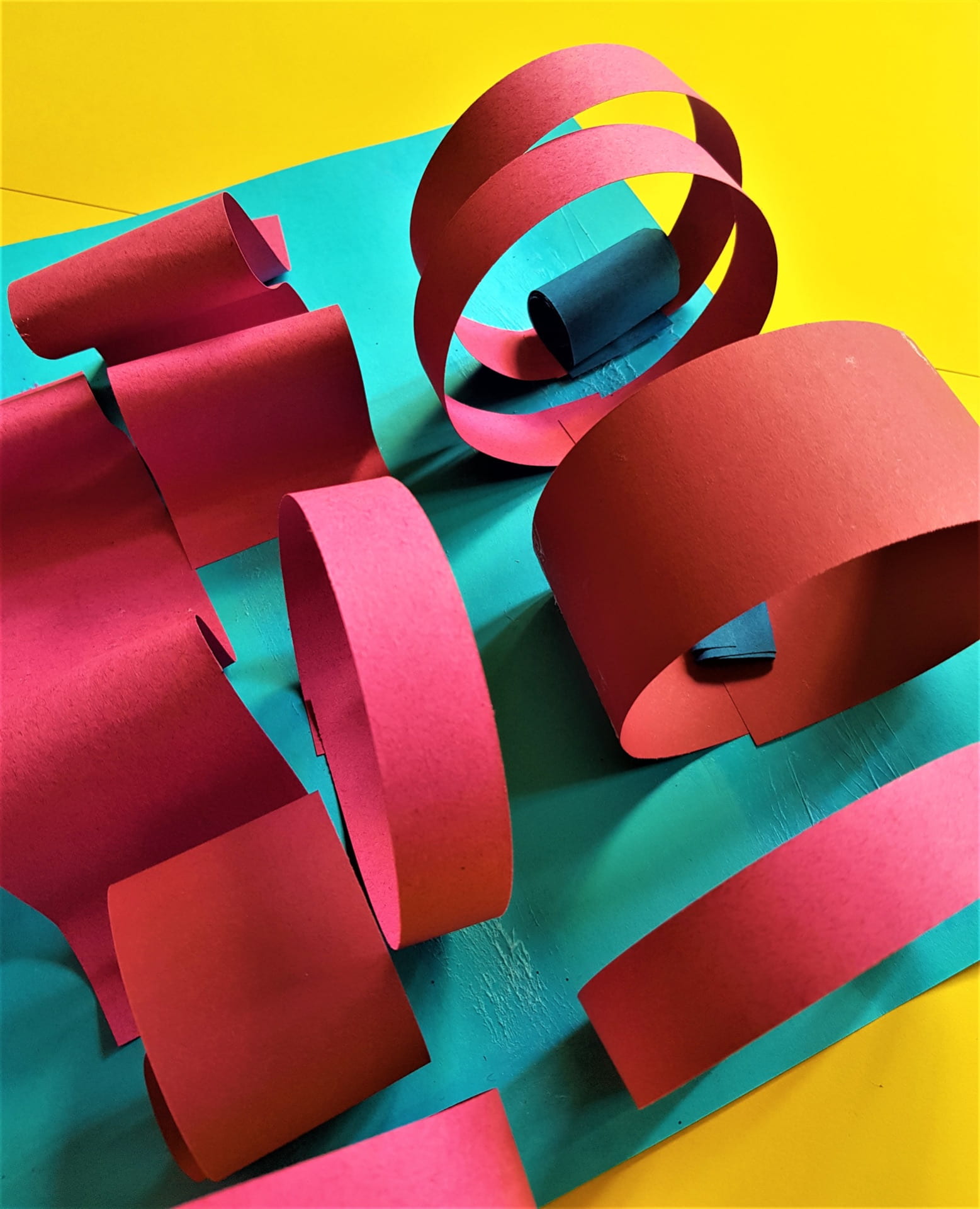 Key words that might help in this wonderous journey:
Key words that might help in this wonderous journey:
- Intuition
- Inspiration
- Uncertainty
- Contact
- Multi-perspectives
- Connections
- Thinking
- Pathways
- Mind wandering
- Ambiguity
- Joy
- Surprise
- Amazement
- Novelty
About the Author
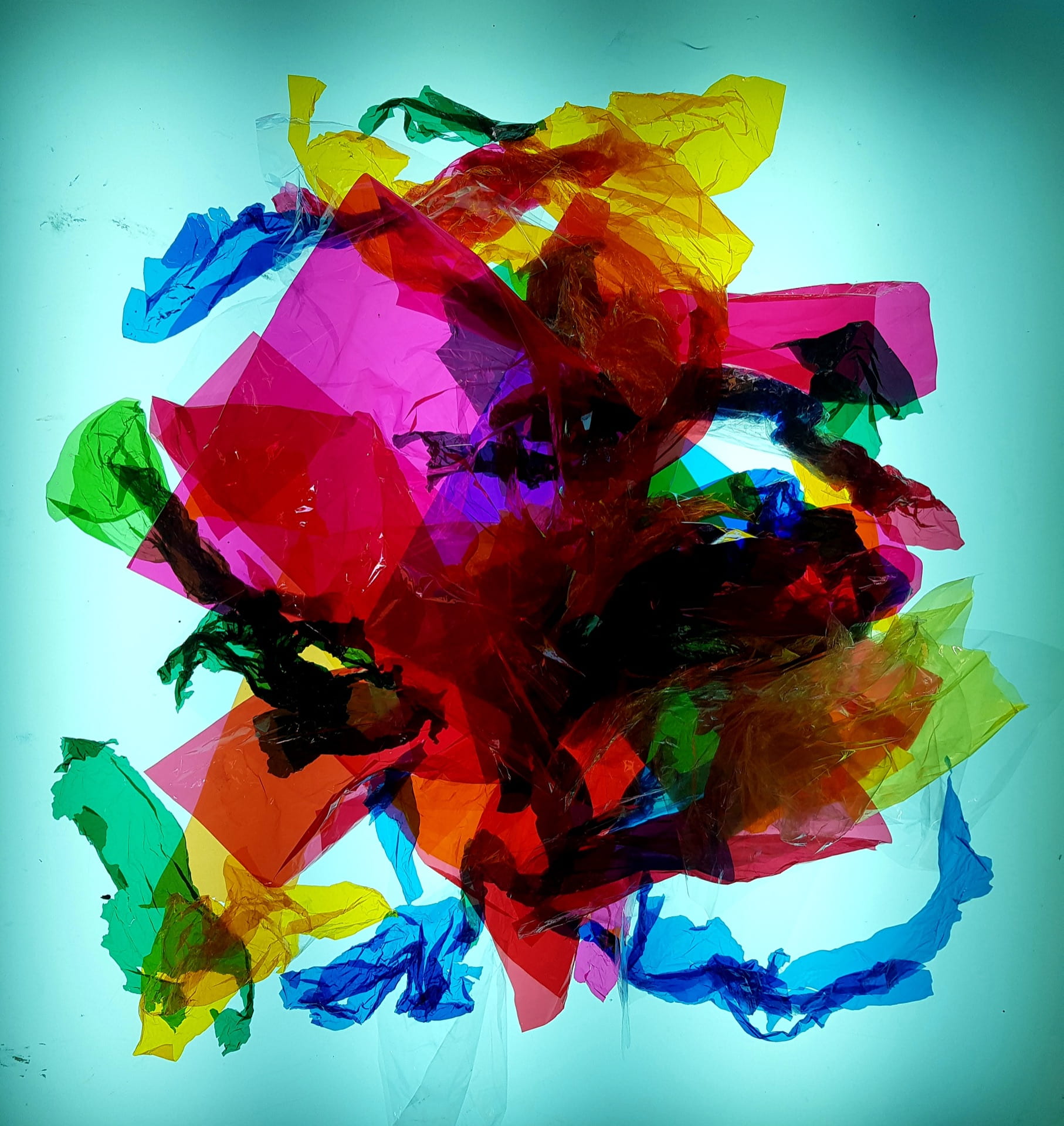 Holly BF Warren atelierista/art studio teacher/multimedia artist creator of the Think Tank and the Artelier. Holly works as a creative facilitator and mentor in Primary and Early Years. She is also the narrator of the educational landscapes she creates with her students which invite the audience to step inside the works of art created fuelling the imagination of the viewer. Her mottos are “Learning never stops” “When you step inside your imagination you have found the door to yourself. Always leave this door, it is an invitation to see far and wide. Close it and you will wither.”
Holly BF Warren atelierista/art studio teacher/multimedia artist creator of the Think Tank and the Artelier. Holly works as a creative facilitator and mentor in Primary and Early Years. She is also the narrator of the educational landscapes she creates with her students which invite the audience to step inside the works of art created fuelling the imagination of the viewer. Her mottos are “Learning never stops” “When you step inside your imagination you have found the door to yourself. Always leave this door, it is an invitation to see far and wide. Close it and you will wither.”
Continue the journey here if you wish:
Other posts written by Holly:
- The Think Tank Environment
- Light Narratives: A light adventure in the Think Tank Environment
- Ripples: A Journey Through Colour in the Think Tank Environment
- Activities from the “Think Tank” for Primary Children
- Creative and Imaginative Online Adventures in the Think Tank Environment
- The Boundaries of Imagination
- The Pursuit of Imagination
- If I Can Imagine, I Know I Can: Extending the Boundaries of Imagination
References
Eliasson, O. (2016). Why art has the power to change the world. World Economic Forum. Retrieved 29 December 2020, from https://www.weforum.org/agenda/2016/01/why-art-has-the-power-to-change-the-world.
Warren, H. (2020). Where does a Work of Art start?. Holly B.F. Warren. Retrieved 29 December 2020, from https://hbfwarren.com/.
Wilkin, S. (2020). Retrieved 29 December 2020, from https://www.researchgate.net/post/The_beginning_of_a_work_or_art.

